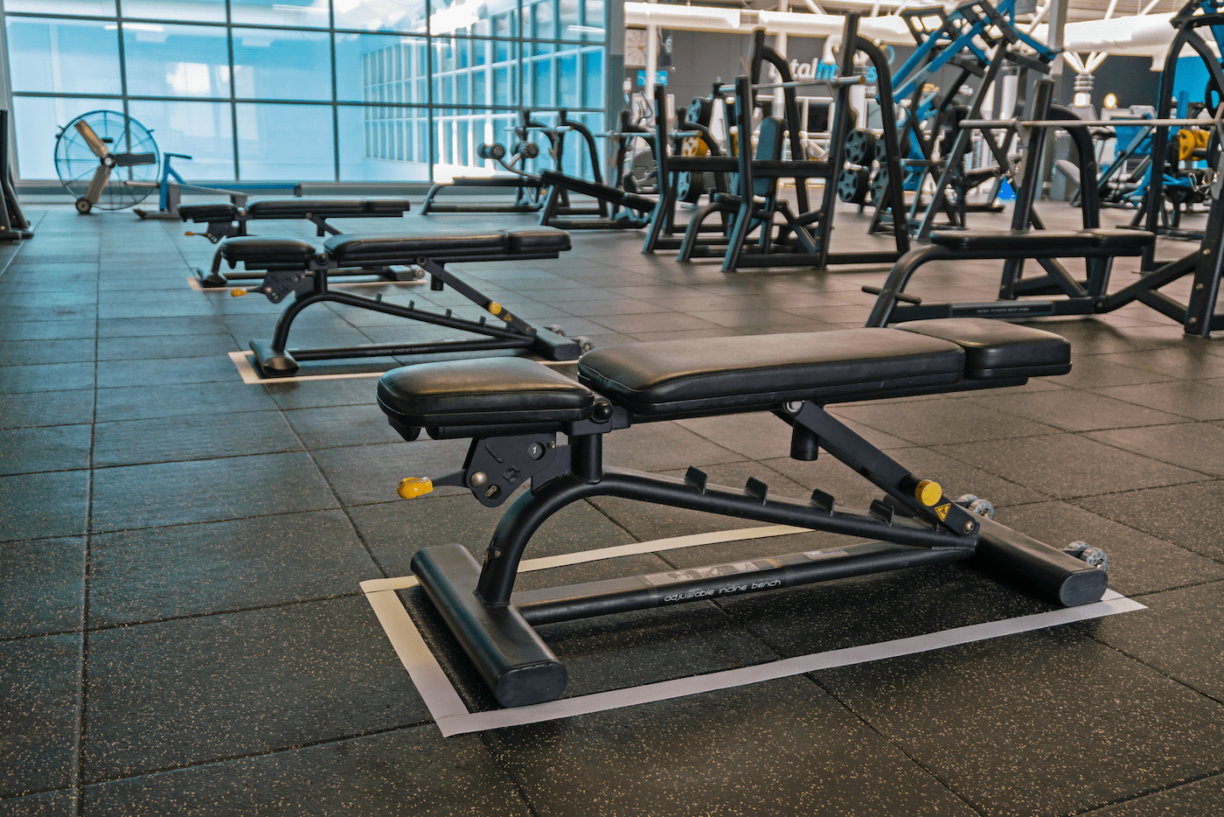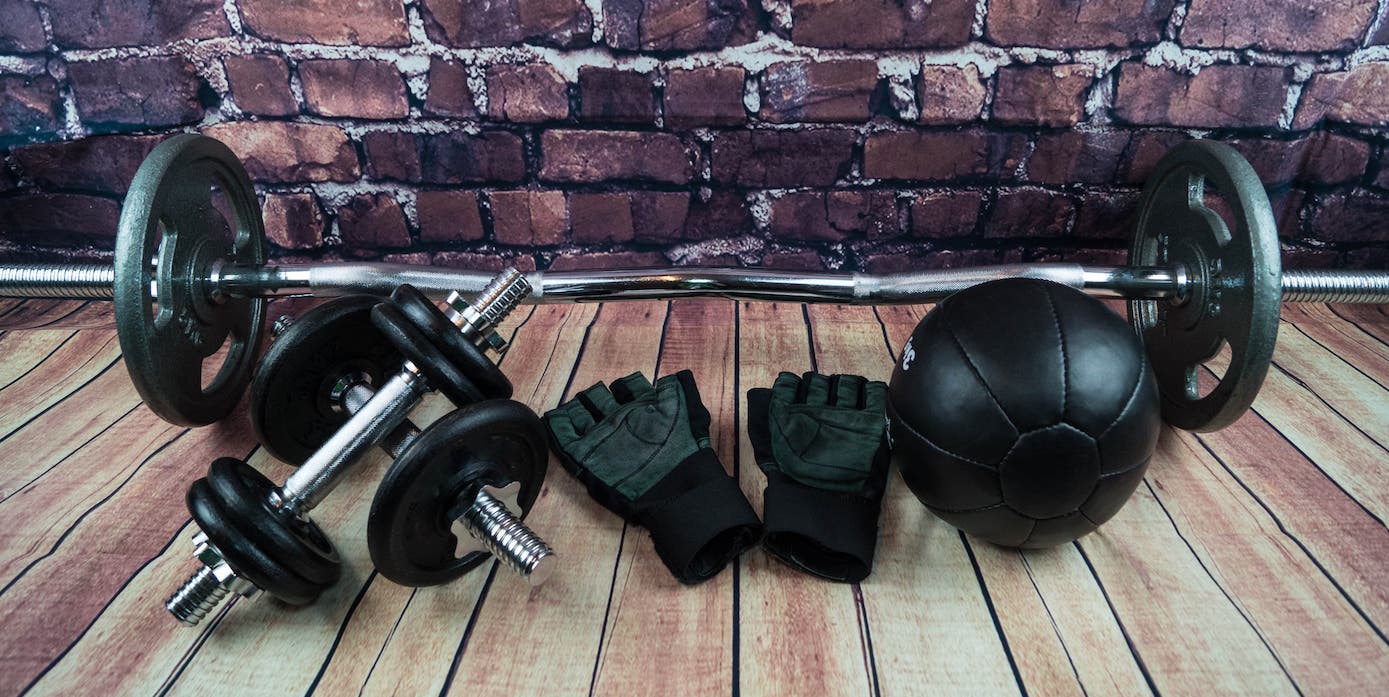THE BENEFITS of lifting weights and incorporating resistance-based exercises into your workout are abundant. Despite the benefits, lifting weights for beginners can be daunting for lots of people, particularly if you’re new to fitness as there are many misconceptions about this form of exercise.

To bust some of these myths and help those who are interested in taking up weight training, Steven Virtue, Fitness Development Manager at Total Fitness, has shared some expert insight for us on lifting weights.
Who is weight training for?
Put simply, anyone can benefit from weight training because not only does it help to build strength, but it also curbs the impact that ageing can have on our bodies.
As we age, we all begin to suffer from a loss of bone density and muscle mass.
Due to the compression, tensive and torque forces your body is exposed to when performing compound training, weight training improves both your muscle mass and bone density, making it a fantastic form of exercise to resist ageing.
Furthermore, as we continue to spend more time at home and likely be less active than usual over lockdown, such loss in muscle mass and bone density can be exacerbated. So, weight training is a fantastic form of exercise to incorporate into your lockdown workout routine.
Does weight training burn body fat?
Typically, workouts such as HIIT (high-intensity interval training) and cardio are those that people take up to burn fat, with weight training often being overlooked or even associated with bulking up.
However, weight lifting is actually a great form of exercise to help your shift stubborn fat as, with any form of intense activity, it draws upon the fat cells stored in your body to produce energy.
There are three specific ways that weight training helps with fat loss; you burn calories during your weight session; you burn calories to aid the process of muscle building and repair; and new muscle gained costs lots of energy to maintain, meaning you are burning more calories throughout the day.
However, it’s important to note that burning fat is fundamentally dependent on a calorie deficit – when you consume fewer calories than you expend.
Leave the task of establishing a healthy calorie deficit for your body to the experts. Collaborate with a personal trainer who can calculate your energy requirements and guarantee that you consume the appropriate amount of nutrients tailored to your needs.
Does lifting weights cause you to bulk up?

A particularly common misconception of weight training is that it will cause you to bulk up which is, understandably, not desirable for all.
While lifting weights is certainly an effective way to train your muscles and make them stronger and more defined, the reality is that you need to produce or consume high levels of testosterone and be in a calorie surplus to bulk up significantly.
If you are looking to build and follow a weight training plan, then you are likely to end up with a toned and strong body. Boulder shoulders? Not so much.
How to work out safely with weights?
If you haven’t lifted weights before, then it can be difficult to know where to start meaning the potential risk of injury can be quite intimidating.
A well-designed weight training program should incorporate a variety of movement patterns to create structural balance and help keep you injury-free.
Personal trainers can be helpful in creating an engaging and diverse programme that balances squatting, pushing, bending, pulling, single-leg, single-arm, and various core-focused exercises to keep you strong and avoid injuries.
If you’re not sure how to build a safe yet effective routine, here is a helpful beginner’s checklist for weight training:
- Start by mastering the basics in the main compound movements, squats, deadlifts, bench press, rows.
- Do 2-3 weight training sessions per week focussing on 3 sets of 12-15 reps.
- Start light, choose a weight you can stick to for the whole 3 sets and look to increase the weight weekly as you start to feel more comfortable, stronger and competent.
- Perform your movements slow to get use to the movement pattern. Spending ample time performing your repetitions this way improves your mobility and technique in the long run, thus enabling you to do more complex exercises later.
- Monitor your recovery, sleep and nutrition. Take rest days when needed and eat the right amount to support your weight training programme.
How can you tell it’s time to shift to a heavier weight?
Once you reach the point when the last few reps of your workout are feeling comfortable, it’s time to switch to a heavier weight.
A good habit to get into is to keep a journal and write down the reps you have done and weights you are using for each exercise, noting down how your body is responding to the workout.
Whilst everyone has off-days at the gym, hopefully, your journal will highlight when the workout is no longer challenging your body.
There is no set time frame for when the shift to a heavier dumbbell weight needs to happen – the adaptation process for each person is completely different.
It’s important to listen to your body and not over-exert yourself unnecessarily.
Those who are just starting their fitness journey and using weights are likely to adapt and move up the weights range slower than a fitness enthusiast who has already developed their muscles extensively.
So there you have it, everything you need to know if you’re looking to start weight training.
